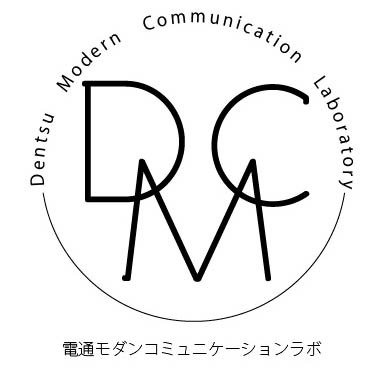This time, we'd like to highlight the book 'The Pendulum of Design Innovation' by takram design engineering. They advocate for a new approach to "making things" in this era, continuously creating compelling products and services at the intersection of engineering and design.

Design Engineer?
Before introducing the book's contents, let's first introduce the company behind it, takram. One unique feature characterizing this company is that it employs staff with the unfamiliar title "Design Engineer."
According to the book, a Design Engineer is someone who possesses both designer and engineer skills, crossing boundaries between these fields to approach problems in a transdisciplinary manner.
For example, in manufacturers of household appliances, it's common for engineers responsible for technology and designers responsible for aesthetics to work in separate departments. When developing a new product, engineers handle the technical approach, while designers handle the appearance and other design aspects. They bring their respective expertise together, coordinating (and sometimes clashing) as they move forward.
However, takram deliberately avoids this division. Instead, it adopts an approach where a single person—a Design Engineer—takes an integrated approach to solving problems. In other words, takram is a company that cultivates talent by equipping engineers from engineering backgrounds with skills in art and design, and designers from art university backgrounds with knowledge of engineering.
So why are design engineers necessary? This is closely tied to the book's theme, "design innovation," so let's first examine the book's structure.
The Limits of Modern Manufacturing
This book highlights the limitations of modern manufacturing methods—specifically, the modern approach based on the idea that breaking problems down into small parts allows us to tackle them. It argues that the division of labor among specialists (engineers handling only technology, designers handling only design) can no longer meet the demands of manufacturing in the new era.
The book carefully explains these difficulties using terms like "Complexity," "Composite" (meaning interdependence), and "Ineffability" (difficulty to describe). In summary, modern products are designed to provide a single "experience" through the complex interplay of components from different domains: hardware, electronics, software, networks, and services. This makes it difficult to create something by breaking it down into individual elements and approaching production through a division of labor.
(For example, creating an online game app for a smartphone requires expertise across multiple domains.)
In today's manufacturing environment, it's necessary to view technology from a design perspective and consider design from a technical perspective. In other words, the importance of an integrated viewpoint and skills is increasing.
Let's quote from this book:
"The period from 2010 to the present constitutes the fifth generation. This is the era of 'Hardware + Electronics + Software + Networks + Services'. (omission)
The ability to consider these five elements simultaneously and treat them as equally important has become essential for creating modern innovation. The internet has flattened accessibility to technology, making information readily available. At the same time, the increased options for components means cutting-edge manufacturing now requires organically combining multiple specializations. Furthermore, products are increasingly evaluated not by specs, but by the experience they provide. These circumstances demand we transcend disciplinary boundaries, handle elements holistically, weave them together, and integrate them." (P.12)
What is pendulum thinking?
So, how do takram's design engineers approach modern manufacturing? This is where the "pendulum" thinking referenced in the title comes into play.
Pendulum thinking is
"Not being confined to a single framework, but swiftly oscillating between two (or more) extremes, finding the answer within the lingering afterimage of that movement." (P.28)
For example, when faced with a mechanical engineering challenge, it involves devising a
For example, when faced with a mechanical engineering challenge, it refers to thinking that allows you to nullify the problem itself by devising a clever user experience design. If engineers possess a designer's perspective and designers possess engineering skills, the range of solvable problems expands, potentially yielding deeper insights. The book argues that new approaches to problems rarely visible within specialized divisions become possible only through the cross-disciplinary, multifaceted perspective embodied by the "design engineer."
"Observe the subject from various angles. The perspective of the participant, the perspective of the observer. Establish an axis, view the landscape from its opposite end, and then even deviation from the axis itself becomes possible." (P.29)
This is the new philosophy of creation proposed by takram: pendulum thinking.
Three Methodologies Grounded in Pendulum Thinking
This pendulum thinking (boundary-crossing, multifaceted, and transcending domains) permeates various methodologies in takram's design practice. The book introduces three methodologies: "Prototyping," "Story Weaving," and "Problem Reframing." While detailed case studies are best experienced by reading the book, here's a brief summary of each methodology.
1.Prototyping: The pendulum swinging between "making" and "thinking."
While the importance of "prototypes" has long been recognized in product development, traditional prototyping was primarily conducted for concrete-side verification, such as pre-production assessments. This was based on the premise that "abstract concepts can be transferred to concrete forms," moving from planning to design, and then from design to manufacturing. In contrast, the new prototyping practiced by takram goes beyond concrete improvements. It actively oscillates between the concrete and abstract realms to elevate the level of abstraction.
2.Story Weaving: A pendulum swinging between the concrete and the abstract.
Story Weaving is a method that involves continuously and flexibly refining the concept established early in a project, polishing it into something better. It is not a replacement for traditional concept setting, but rather reinforces and expands upon it. The story, as a deliverable of the "conceptual aspect" in product development, cannot exist in isolation. They are discovered through simultaneous progression and interaction with the "making" process, the concrete aspect. This means that as prototypes evolve during project development, the stories themselves must be continuously refined. "Making" (the concrete aspect) and "telling" (the abstract aspect), or "making things and telling stories," mutually shape and elevate each other.
3.Problem Reframing: A pendulum swinging between questions and answers.
Finding an answer to an initial question gives rise to a new, next-stage question. Innovation only emerges through this iterative process. Furthermore, since the quality of the answer is ultimately defined by the quality of the question, the ability to verify whether the given question is correct in the first place becomes essential.
Toward an era where there are no right answers and past experience is no longer relevant
Takram primarily advocates innovative approaches to solving new challenges and new philosophies in product and service design. I believe this applies equally (albeit in a different field) to the advertising industry. As the realm of communication becomes increasingly digital, PR, promotion, CRM, service development, and digital marketing are becoming deeply intertwined and highly integrated. Precisely what is happening in manufacturing is occurring here.
"Projects tasked with pioneering new fields—where you don't know what to create, there's no clear answer, and past experience doesn't apply—are difficult for anyone to undertake. The probability of failure is high. It's natural to feel reluctant. Yet, it is precisely by pioneering new fields that we can stimulate metabolism across society. This is the very domain takram aims to engage with." (P.66-67)
I believe this is an exciting and highly insightful book, not only for those interested in manufacturing itself, but also for anyone passionate about pioneering new fields.





